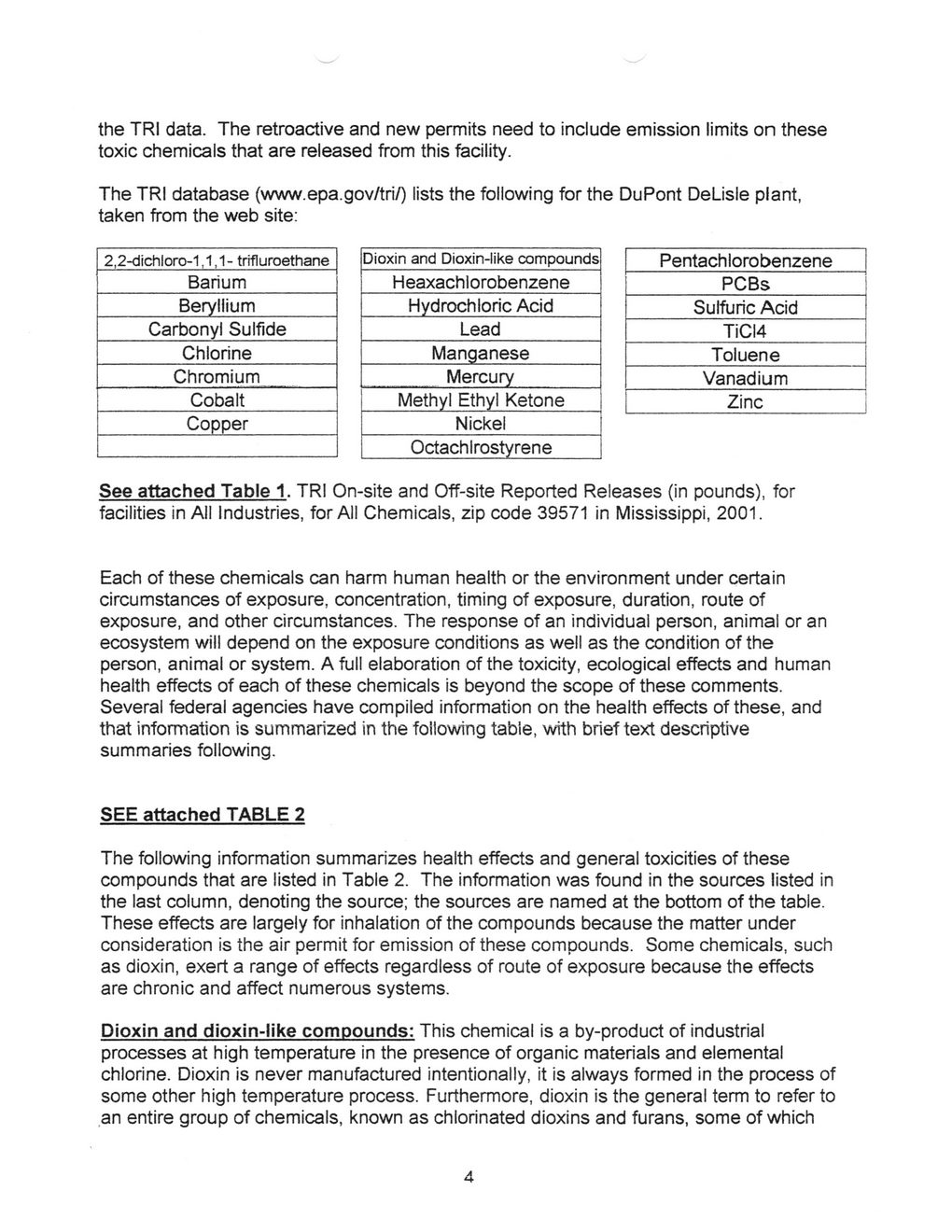This text was obtained via automated optical character recognition.
It has not been edited and may therefore contain several errors.
the TRI data. The retroactive and new permits need to include emission limits on these toxic chemicals that are released from this facility. The TRI database (www.epa.gov/tri/) lists the following for the DuPont DeLisle plant, taken from the web site: 2,2-dichloro-1,1,1- trifluroethane ___________Barium______________ ___________Beryllium___________ Carbonyl Sulfide ___________Chlorine____________ ___________Chromium ___________Cobalt______________ ___________Copper______________ Dioxin and Dioxin-like compounds Heaxachlorobenzene Hydrochloric Acid ___________Lead_____________ _________Manganese__________ _________Mercury____________ Methyl Ethyl Ketone ___________Nickel___________ Qctachlrostyrene Pentachlorobenzene PCBs Sulfuric Acid TiCI4 ______Toluene Vanadium Zinc See attached Table 1. TRI On-site and Off-site Reported Releases (in pounds), for facilities in All Industries, for All Chemicals, zip code 39571 in Mississippi, 2001. Each of these chemicals can harm human health or the environment under certain circumstances of exposure, concentration, timing of exposure, duration, route of exposure, and other circumstances. The response of an individual person, animal or an ecosystem will depend on the exposure conditions as well as the condition of the person, animal or system. A full elaboration of the toxicity, ecological effects and human health effects of each of these chemicals is beyond the scope of these comments. Several federal agencies have compiled information on the health effects of these, and that information is summarized in the following table, with brief text descriptive summaries following. SEE attached TABLE 2 The following information summarizes health effects and general toxicities of these compounds that are listed in Table 2. The information was found in the sources listed in the last column, denoting the source; the sources are named at the bottom of the table. These effects are largely for inhalation of the compounds because the matter under consideration is the air permit for emission of these compounds. Some chemicals, such as dioxin, exert a range of effects regardless of route of exposure because the effects are chronic and affect numerous systems. Dioxin and dioxin-like compounds: This chemical is a by-product of industrial processes at high temperature in the presence of organic materials and elemental chlorine. Dioxin is never manufactured intentionally, it is always formed in the process of some other high temperature process. Furthermore, dioxin is the general term to refer to an entire group of chemicals, known as chlorinated dioxins and furans, some of which

Dupont Air Hearings Sierra-Club-Recommendations-(05)